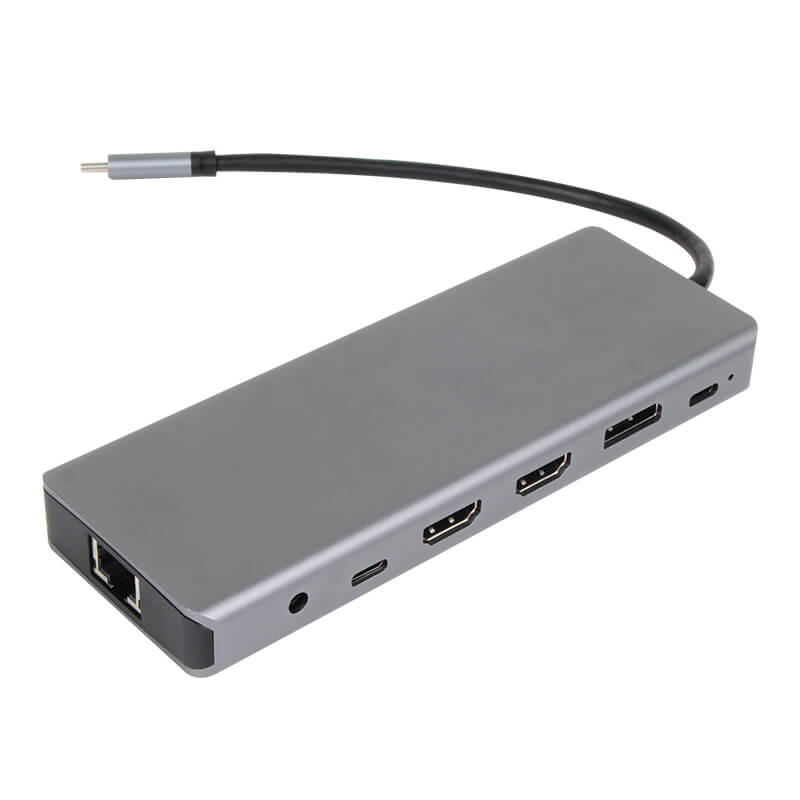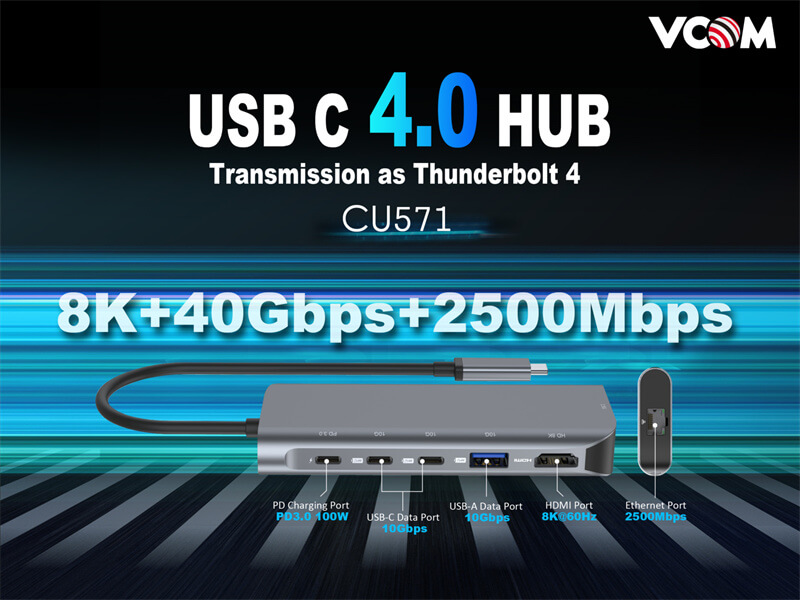Docking stations have become essential accessories for many professionals and tech enthusiasts. They offer a convenient way to expand the connectivity of laptops, making it possible to connect multiple peripherals such as monitors, keyboards, mice, and external storage devices.
However, a common issue that users face with docking stations is that they heat up during use. In this article, we will explore why docking stations get hot and provide a comprehensive guide on how to choose the right one for your needs.

Why Does the Docking Station Get Hot?
Electronic devices generate heat as a byproduct of their operation, and docking stations are no exception. If the docking station feels excessively hot to the touch, this is a clear sign of overheating. While some warmth is normal, it should not be uncomfortable to touch. Several factors contribute to the heating of docking stations:
High-Power Consumption Devices: Docking stations often connect to high-power consumption devices such as external monitors, hard drives, and other peripherals. These devices draw significant power, which can cause the docking station to heat up.
Continuous Data Transfer: When data is continuously transferred between the laptop and connected devices, the internal components of the docking station work harder, generating more heat.
Poor Ventilation: Many docking stations are compact and do not have adequate ventilation. This can trap heat inside the device, causing it to overheat.
Overheating can lead to several risks, connected devices such as monitors, keyboards, or external drives may not function properly; You may experience slower data transfer rates or lag in peripheral devices; and overheating can cause intermittent disconnections of the devices connected to the docking station.
How to Choose a Docking Station
Remember purchasing docking products from a reliable Electronic product Manufacturer is important. Here's a detailed guide to help you make the best choice:
Step 1: Identify Your Device Connection Needs and Performance Requirements
First, you need to evaluate your connection requirements in work and life. Consider the types of devices you want to connect to your docking station.
Monitors: How many monitors do you need to connect, and what resolutions do they support?
External Storage: Do you need to connect external hard drives or USB drives?
SD/TF Cards: Will you be using SD or TF cards frequently?
Keyboard and Mouse: Do you need additional ports for a keyboard and mouse?
Network Cables: Do you require a wired network connection?
Power Sources: Will you need to charge your laptop or other devices through the docking station?
Determining the number and type of ports required is crucial. Additionally, evaluate your performance needs. For example, suppose you are a graphic designer or video editor. In that case, you will need higher performance standards compared to someone who uses their laptop primarily for web browsing and office tasks.

Step 2: Check Compatibility with Your Laptop’s Ports
Laptops come with various types of ports, and it is essential to ensure that the docking station you choose is compatible with your laptop's ports. Common port types include:
USB-A: Traditional USB port found on many laptops and peripherals.
USB-C: Newer, versatile port that supports data transfer, video output, and charging.
Thunderbolt: High-speed port that provides higher data transfer rates and supports multiple functionalities.
Make sure the docking station supports the ports your laptop has. For instance, if your laptop has a Thunderbolt port, choosing a docking station with Thunderbolt support will ensure optimal performance.
Step 3: Choose the Suitable Docking Station Based on Your Needs
Understanding the different types of ports and their functionalities can help you choose the right docking station. Here’s a detailed explanation of various port types:
Display Connections:
VGA: An older standard, limited to 1080P resolution, and prone to interference.
HDMI: A mainstream option available in versions 1.4 (supports 4K at 30Hz) and higher versions for gaming needs.
DP (DisplayPort): Suitable for high-refresh rates, with versions 1.2 and above supporting 4K at 60Hz.
Storage Connections:
USB types: Includes MicroUSB, Type-A, Type-B, and Type-C.
USB protocols: Ranges from USB 3.0, USB 3.1, USB 3.1 Gen 1, etc. Match the storage device speed with the USB protocol (e.g., USB 3.0 for HDD, USB 3.1 for SSD).
SD/TF Card Connections:
UHS1 vs. UHS2 types: UHS2 offers faster data transfer rates compared to UHS1.
Compatibility and speed considerations: Ensure the docking station supports the type and speed of your SD/TF cards.
Keyboard and Mouse Connections:
Focus on having enough USB-A ports for your peripherals, as performance is less critical for these devices.
Network Connections:
Standard for fast and reliable wired network connections. Ensure the docking station has a Gigabit Ethernet port if you need a wired connection.
Power Connections:
PD (Power Delivery) fast charging support: Look for docking stations that support Power Delivery for fast charging, up to 100W.
Docking Using Tips
Unplug Unnecessary Devices:
Disconnect any devices not currently in use to reduce the load on the docking station.
Improve Ventilation:
Ensure that the docking station is placed in a well-ventilated area. Avoid placing it on soft surfaces like beds or couches that can block airflow.
Check for Firmware Updates:
Reliable brands often release firmware updates that optimize power management and thermal performance. Check the manufacturer’s website for any updates.
Inspect for Dust:
Dust can accumulate in the vents and cooling fans, obstructing airflow. Use compressed air to clean out any dust buildup.
Reduce Usage Time:
Give the docking station breaks by turning it off periodically, especially during intensive tasks.
Contact Support:
If the overheating persists, contact the manufacturer’s customer support for further assistance. The device might need repair or replacement.
Addressing overheating issues promptly can prevent damage to your docking station and the connected devices, ensuring a longer lifespan and better performance.
In conclusion, understanding why docking stations heat up and knowing how to choose the right one can greatly enhance your computing experience. Happy docking!
Tag:




